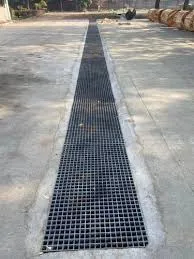
-
 Afrikaans
Afrikaans -
 Albanian
Albanian -
 Amharic
Amharic -
 Arabic
Arabic -
 Armenian
Armenian -
 Azerbaijani
Azerbaijani -
 Basque
Basque -
 Belarusian
Belarusian -
 Bengali
Bengali -
 Bosnian
Bosnian -
 Bulgarian
Bulgarian -
 Catalan
Catalan -
 Cebuano
Cebuano -
 China
China -
 China (Taiwan)
China (Taiwan) -
 Corsican
Corsican -
 Croatian
Croatian -
 Czech
Czech -
 Danish
Danish -
 Dutch
Dutch -
 English
English -
 Esperanto
Esperanto -
 Estonian
Estonian -
 Finnish
Finnish -
 French
French -
 Frisian
Frisian -
 Galician
Galician -
 Georgian
Georgian -
 German
German -
 Greek
Greek -
 Gujarati
Gujarati -
 Haitian Creole
Haitian Creole -
 hausa
hausa -
 hawaiian
hawaiian -
 Hebrew
Hebrew -
 Hindi
Hindi -
 Miao
Miao -
 Hungarian
Hungarian -
 Icelandic
Icelandic -
 igbo
igbo -
 Indonesian
Indonesian -
 irish
irish -
 Italian
Italian -
 Japanese
Japanese -
 Javanese
Javanese -
 Kannada
Kannada -
 kazakh
kazakh -
 Khmer
Khmer -
 Rwandese
Rwandese -
 Korean
Korean -
 Kurdish
Kurdish -
 Kyrgyz
Kyrgyz -
 Lao
Lao -
 Latin
Latin -
 Latvian
Latvian -
 Lithuanian
Lithuanian -
 Luxembourgish
Luxembourgish -
 Macedonian
Macedonian -
 Malgashi
Malgashi -
 Malay
Malay -
 Malayalam
Malayalam -
 Maltese
Maltese -
 Maori
Maori -
 Marathi
Marathi -
 Mongolian
Mongolian -
 Myanmar
Myanmar -
 Nepali
Nepali -
 Norwegian
Norwegian -
 Norwegian
Norwegian -
 Occitan
Occitan -
 Pashto
Pashto -
 Persian
Persian -
 Polish
Polish -
 Portuguese
Portuguese -
 Punjabi
Punjabi -
 Romanian
Romanian -
 Russian
Russian -
 Samoan
Samoan -
 Scottish Gaelic
Scottish Gaelic -
 Serbian
Serbian -
 Sesotho
Sesotho -
 Shona
Shona -
 Sindhi
Sindhi -
 Sinhala
Sinhala -
 Slovak
Slovak -
 Slovenian
Slovenian -
 Somali
Somali -
 Spanish
Spanish -
 Sundanese
Sundanese -
 Swahili
Swahili -
 Swedish
Swedish -
 Tagalog
Tagalog -
 Tajik
Tajik -
 Tamil
Tamil -
 Tatar
Tatar -
 Telugu
Telugu -
 Thai
Thai -
 Turkish
Turkish -
 Turkmen
Turkmen -
 Ukrainian
Ukrainian -
 Urdu
Urdu -
 Uighur
Uighur -
 Uzbek
Uzbek -
 Vietnamese
Vietnamese -
 Welsh
Welsh -
 Bantu
Bantu -
 Yiddish
Yiddish -
 Yoruba
Yoruba -
 Zulu
Zulu
frp products for thermal and nuclear power
FRP Products for Thermal and Nuclear Power Enhancing Efficiency and Safety
Fiber Reinforced Polymer (FRP) products have been increasingly recognized for their exceptional properties and versatility in various industrial applications. Among these, the thermal and nuclear power sectors stand out as areas where the utilization of FRP materials can significantly enhance operational efficiency, safety, and sustainability.
Understanding FRP Materials
FRP consists of a polymer matrix reinforced with fibers, typically glass, carbon, or aramid. This composite material is renowned for its high strength-to-weight ratio, corrosion resistance, and durability. These properties make FRP an ideal choice for environments that experience extreme temperatures, radiation, and chemical exposure—conditions prevalent in thermal and nuclear power plants.
Applications in Thermal Power Generation
In thermal power plants, FRP is increasingly utilized in several critical components. One of the most significant applications is in the construction of cooling towers. Traditional cooling towers are often made from concrete, which can be heavy and susceptible to corrosion over time. However, FRP cooling towers exhibit lightweight characteristics, ensuring easier transportation and installation. Additionally, their resistance to corrosion extends the lifespan of the structures, effectively reducing maintenance costs and downtime.
Moreover, FRP can be used in the fabrication of pipes and tanks for transporting various fluids, including corrosive chemicals and high-temperature steam. The lightweight nature of FRP allows for easier handling and installation, as well as reducing the loads on supporting structures. This becomes particularly important in retrofitting existing facilities where minimizing weight is a crucial concern.
Advantages in Nuclear Power Applications
When it comes to nuclear power, safety and reliability are paramount. FRP materials are inherently non-conductive and provide an excellent shielding capability against radiation. This makes them suitable for applications where radiation exposure is a concern, such as in the construction of enclosures and storage for spent nuclear fuel.
frp products for thermal and nuclear power

Additionally, FRP materials can be used in the production of various structural components, including containment vessels and piping systems. Their resistance to radiation makes FRP preferable over traditional materials, as it reduces concerns associated with material degradation and integrity failure over time.
Enhancing Safety with Advanced Materials
FRP's lightweight and corrosion-resistant properties contribute significantly to the safety profile of thermal and nuclear power plants. In the event of an emergency, the ability to quickly and efficiently manage the infrastructure becomes essential. The quick installation and modifications possible with FRP can facilitate faster responses to any incidents that may arise, further enhancing the overall safety of operations.
Moreover, recent advancements in FRP technology have led to the development of fire-resistant composites, which are increasingly important in power generation facilities. These materials help mitigate fire risks associated with electrical systems and flammable substances, contributing to safer operational environments.
Sustainable Solutions for a Greener Future
The drive toward sustainability is reshaping the power generation landscape. FRP materials are often considered more environmentally friendly compared to traditional materials, as they can be produced with a lower carbon footprint. Furthermore, the long lifespan and minimal maintenance requirements of FRP products contribute to a reduction in waste generation over time.
In addition, the ability to recycle certain types of FRP creates opportunities for sustainable practices within the industry. By adopting FRP materials, thermal and nuclear power facilities can align with global efforts to minimize environmental impact while enhancing their overall efficiency.
Conclusion
The incorporation of Fiber Reinforced Polymer products in thermal and nuclear power generation marks a significant advancement toward improving efficiency, safety, and environmental sustainability. As the industry continues to innovate and embrace new technologies, the role of FRP materials will become increasingly critical in addressing the challenges posed by traditional power generation methods. By leveraging the unique properties of FRP, the energy sector can not only enhance operational efficiencies but also forge a safer and more sustainable future for power generation worldwide.









